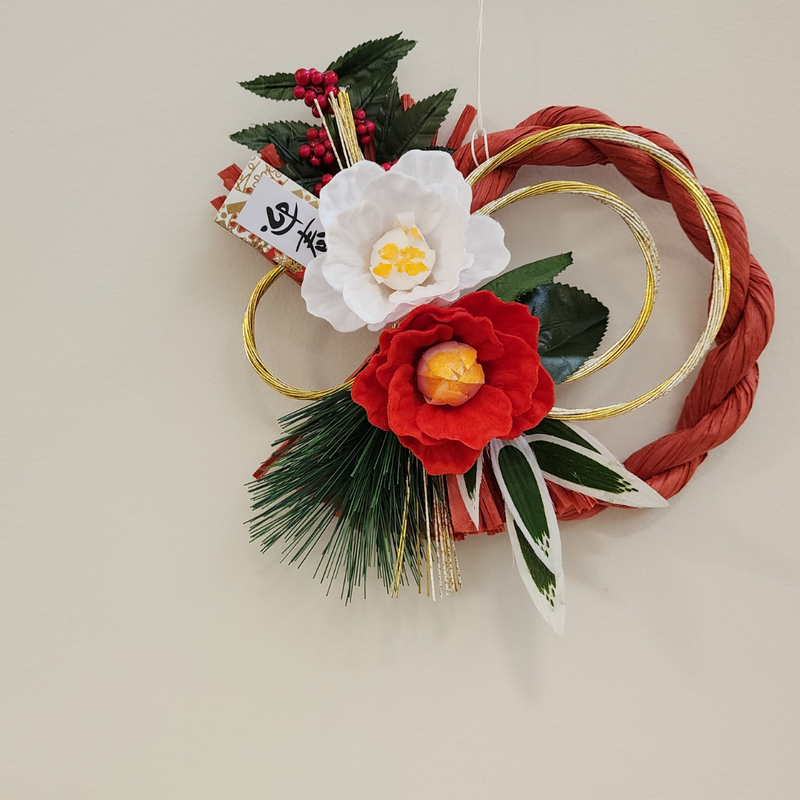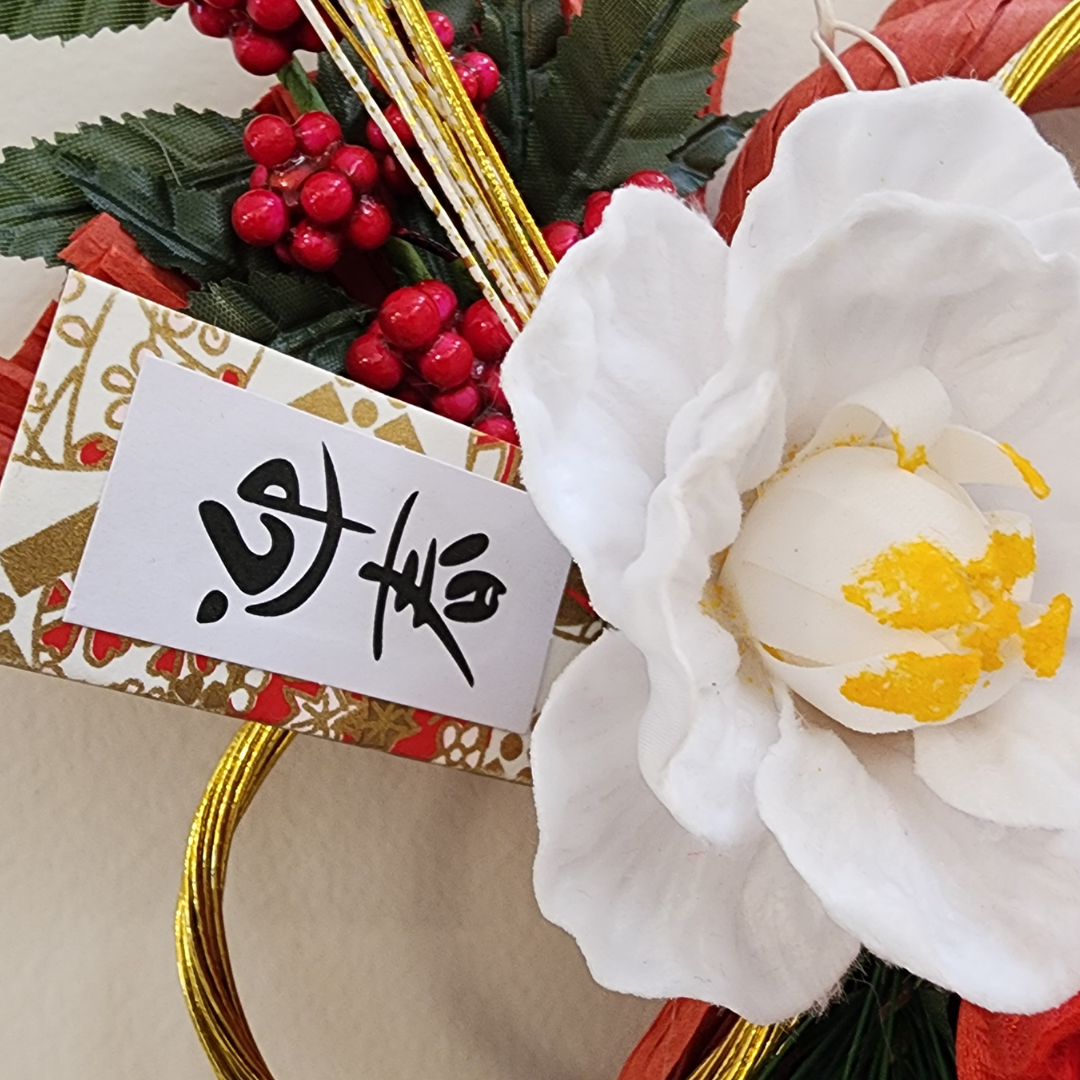New Year's Wall Decoration - Camellia
In stock - Ready to ship! Out of stock
Couldn't load pickup availability
Camellia-Inspired New Year Wreath
In Japan, it’s a cherished tradition to adorn entrances with New Year decorations to celebrate the arrival of a fresh start. This custom dates back over 1,000 years, embodying gratitude for the past year and hope for the year ahead. Add a touch of elegance to your celebrations with this modern Japanese take on the classic New Year decoration. Perfect for welcoming the season in style!
- Size: H25cm × W23cm
- Materials: Paper, artificial flowers
Handle of Care
- Made with flammable materials; avoid placing it in high-temperature areas.
- Contains wire components; handle with care to prevent injury.
- As natural materials are used, storing in damp areas may result in mould or pests.
- Colours may bleed if exposed to water.






A Beautiful Tradition Rooted in Japan’s Harmony with and Respect for Nature and the Gods.
In Japan, New Year decorations, known as shimekazari, are displayed to welcome Toshigami-sama, the deity of the New Year believed to bring happiness and good health for the year ahead.
After a thorough year-end cleaning to purify the home, the decoration signals readiness to receive the deity. This practice reflects heartfelt wishes for a joyful and healthy year, making it one of Japan's cherished traditions.
The shimenawa used in this decoration acts as a protective barrier, symbolically separating the human world from the sacred realm of the gods. Traditionally hung above the entrance door, it is placed at a slightly elevated position, inviting the deity while creating a passage into the divine space.

When to Display New Year Decorations—and Days to Avoid
In Japan, New Year decorations are traditionally put up after the year-end deep cleaning, typically from December 25th to 28th and left until Matsu-no-Uchi (January 7th).
Certain days are avoided due to cultural beliefs. For example, December 29th is considered inauspicious because “29” can be read as ni-jū-ku (double suffering) or ku-matsu (waiting for suffering). Similarly, decorating on December 31st is avoided because it is known as ichi-ya-kazari (one-night display), echoing customs associated with funerals.
These practices reflect the ancient Japanese belief in kotodama—the power of words to influence reality—an enduring aspect of Japanese culture.

Where to Display New Year Decorations and What to Do Afterwards
Shimekazari decorations signify that a space is purified and ready to welcome Toshigami-sama, the New Year deity. Acting as a spiritual barrier, they separate the human world from the divine realm. Traditionally, they are hung above the entrance door at an elevated position, symbolising entry into a sacred space.
Once the New Year period (Matsu-no-Uchi) has passed, these decorations are respectfully disposed of. In Japan, it is customary to take them to a shrine for ceremonial burning.
For disposal at home:
If burning is possible, first purify the area with salt and sake, then burn the decorations. Wrap the ashes in newspaper before discarding them.
If burning is not an option, wrap the decorations in hanshi (thin paper) and purify them with salt and sake before disposal.
These practices reflect the reverence and care in maintaining tradition and respect for the New Year deity.
Recently viewed







